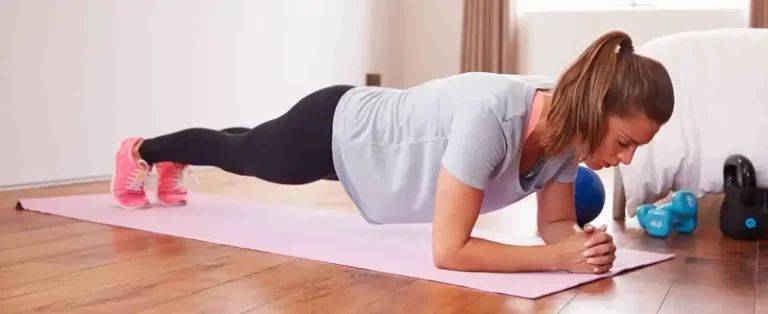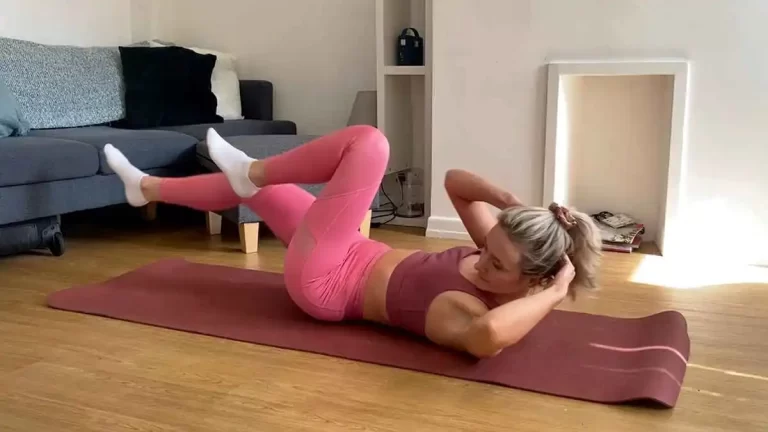Low Lunge Pose (Anjaneyasana)
Anjaneyasana is a warm-up pose that is also referred to as the low lunge stance or the crescent posture. It extends down to your feet from your arms. Anjaneyasana improves posture while also strengthening the core.
In contemporary yoga, Anjaneyasana, also called Low Lunge Pose, is a kneeling pose used for exercise. Anjaneyasana, or low lunge, increases flexibility and stability by strengthening and stretching the quadriceps and hip flexors in the legs and hips.
We get ready for more difficult balancing poses with this asana. Regular practice can help it get better and avoid stiffness and lower body pain. We will now examine the main advantages of Anjaneyasana as well as practical advice for maintaining proper and secure posture.
What Is Low Lunge Pose?
Low Lunge Pose, also known as Anjaneyasana Pose, is a kneeling pose that is suitable for beginners. This assumes the persona of Anjana, another name for Hanuman.
In Sanskrit, Anjaneya means “Son of Anjana.” This expression refers to Maharaj Vibheeshana, a devotee of Lord Rama. He appears to be in the Low Lunge Pose, which symbolizes his humility and deference.
This pose strengthens the quadriceps, which are muscles located at the front of the leg and pushes down the hip flexors in the front of the thigh bones. It improves suppleness at the hip and around the groin. Regular practice is the key to having good posture and balance.
Which muscles are used in Low Lunge Pose?
- Lower Back
- Core (Abs)
- Gluteus
- Hamstrings
- Chest
- Hips
- Hips-Internal
- Knees
- Pelvic
- Psoas
- Quadriceps
Health Benefits of the Low Lunge Pose
Regularly, the following are some of the primary advantages of Low Lunge Pose:
- Stretches, Hips and Thighs
The upper legs’ hip flexors are properly stretched in this position. The front of the hip and thigh are deeply stretched as you lunge one leg forward and bend the knee. It’s fantastic since it’s a good position for hip stretching. - Strengthens Legs
During a lunge, the front leg supports the body’s weight, developing the calves and thighs. This back-leg exercise increases muscle power and aids in balance. You can make your leg muscles feel more powerful. - Improves Posture
To compensate for the increased sitting position and hunch-of-desk syndrome, the Anjaneyasana Pose can open the hip flexor and chest. You can improve your overall posture by adopting this position. - Relieves Stress
Bend forward while holding onto both sides of the front foot to do another simple stretch that releases tension from the neck, shoulders, and spine. Stress can be reduced by regularly performing this calming stance. - Prepares for Other Poses
In order to prepare for the upcoming challenges, such as the warrior ii, triangle pose, and standing splits, Anjaneyasana Pose opens up the hips. Prior to their powerful yoga programs, they used it. - Builds Balance & Stability
To maintain the lunge, you must balance on one leg, using both your leg and core muscles. These are additional advantages of yoga. To increase your strength, stability, and body awareness, elevate your back knee while sinking your hips. - Therapeutic for Knees
Anjaneyasana Pose can also strengthen the knees and the muscles that support them if done correctly. This exercise reduces compressive pressures at the knee joint by gradually stretching the hip flexors and quadriceps. However, before starting practice, one must speak with their physician if they have a knee injury. - Energizes with Backbend
A backbend enlivens the position and makes it more intense. Your chest and hips can be opened up to release sluggish energy, which eventually makes you feel refreshed. - Grounding
Connecting by applying pressure through the feet is known as grounding. These deep stretches have a relaxing, grounding impact on muscles by releasing tension in the body and mind. - Accessible Pose
Any degree of fitness can perform this pose; even a novice can do it. It’s a simple, regulated method to get the benefits of hip-stretching and lengthening. Proceed cautiously and adjust as needed.
How to do a low lunges pose?
- The first pose is called Adho Mukha Svanasana, which means Downward-Facing Dog.
- Allow the top of your left foot to rest on the mat while you slowly drop it. As far back as it feels comfortable, slide your left knee.
- To frame the ears, take a breath and slowly stand up while moving your hands overhead. Face the palms toward each other. Focus your attention on your fingertips.
- Lift the rib cage away from the hips and pull your pubic bone to your navel as you release the breath.
- Don’t stay in this position for longer than a minute. Exhale to widen the stretch, inhale to lengthen the spine.
- Breathe and expand your abdomen to exit the posture. Step back to the downward-facing dog after exhaling and letting your hands drop to the ground. On the other side, repeat.
Low lunges pose video:
What are the Beginners’ Tips for low lunges pose?
- You can do the front thigh stretch with your hands on the ground, blocks, or your hips.
- To increase stability, “scissor” (pull) your hips together energetically.
- To cushion your back knee, fold a blanket.
- Check out Downward Dog’s Esther Ekhart’s tips on how to enter Lunge.
Modifications and Variations
If you experience knee discomfort, there are a few things you can do. This pose can also be squeezed for a counting stability challenge.
- Need a Modification?
In order to rest more on the upper thigh than the knee joint, try to move your weight forward.
If you are unable to place any weight on the back knee, you may also attempt to cushion the knee by using a blanket or tucking your mat into a numbered pillow.
Another option is to rest your palms on your front thigh. Your body may feel more supported and balanced if you relieve the back toes underneath.
Safety and Precautions
If you have a back or knee ailment, you should avoid this posture.
You should be cautious not to put your knee in contact with your ankle in most yoga postures that require a bent knee since that puts the knee at risk.
Increase the training gradually to perform Anjaneyasana. In the event of pain, never perform this pose again. Always ensure that your core muscles are engaged and that you have warmed up.
- Don’t perform this pose while your B.P. is high.
- You can practice controlling your hands on your thighs if you have shoulder issues.
- Prevent hip and knee injuries of any kind.
Contraindications for low lunges pose
A crescent lunge has certain contraindications.
- Knee injury
- Hip injury
- Groin injury
- Low back problems
- High blood pressure
Conclusion
When done properly, the Anjaneyasana Pose provides strength and stability while also assisting with hip and thigh stretching. In addition to its physical benefits, it is a balancing position that allows one to focus better and balance themselves. Expand your practice gradually while being mindful of your physical limits. Any yogi can benefit from Yoga Anjaneyasana when it is properly adjusted. Anjaneyasana is a fundamental pose in the yoga sequence because of its many uses and healing properties.
FAQs
What is the description of Anjaneyasana?
An equal-maintenance position is maintained for the arms, armpits, shoulders, intercostal muscles, abdomen, quadriceps, and pelvic muscles.
It stretches the backbone into a beautiful crescent form, lengthening it. Additionally stretched are the deeper tissues at the groin and inside the thighs.
What is the duration of Anjaneyasana?
Beginners should hold Anjaneyasana for four to eight deep breaths per side. For the Advanced Performance Duration, hold Anjaneyasana for one to three minutes on each side.
How to teach Anjaneyasana?
CUES FOR TEACHING
Firm your abdominals and raise your body to elongate your upper and lower spine.
To deepen the expanse, thrust your hips forward and extend your ribs away from your hips.
To lengthen the stretch, slide the slouched leg back.
Keep your lower abdominals pushed up and pay attention to your lower back.
What is the spiritual meaning of Anjaneyasana?
This stance, as told in the myth, reaches a young, divine infant (Anjaneya), who is drawn to the sky for the sun’s heat and is captivated by a dazzling fruit in the sky. The human urge to jump up and grab what we want is characterized by Anjaneyasana, also known as Low Lunge Pose.
What are the precautions for Anjaneyasana?
If you have thyroid problems, you can still do Anjaneyasana with a few adjustments and safety measures. For example, lay a folded blanket or cushion behind your back knee to support your joints and avoid overstretching.
References:
- EkhartYoga. (2023, May 31). Low lunge – Ekhart Yoga. Ekhart Yoga. https://www.ekhartyoga.com/resources/yoga-poses/low-lunge
- Crescent Low Lunge Pose Yoga (Low Lunge Pose) | Yoga Sequences, Benefits, Variations, and Sanskrit Pronunciation | Tummee.com. (2017, October 15). Tummee.com. https://www.tummee.com/yoga-poses/low-lunge-pose
- Health Benefits of Anjaneyasana (Low Lunge Pose): Benefits, How to Do it and Precautions. (n.d.). https://www.tataaia.com/blogs/health-and-lifestyle/health-benefits-of-anjaneyasana.html
- JanviMangukiya, J. (2024, October 3). Anjaneyasana – Low Lunge Yoga Pose – Benefits, Steps. Mobile Physiotherapy Clinic. https://mobilephysiotherapyclinic.in/anjaneyasana-low-lunge-pose-yoga/#Modifications_and_Variations
- beYogi. (2018, September 21). Low Lunge Pose – Anjaneyasana | beYogi. Beyogi. https://beyogi.com/learn-yoga/poses/low-lunge-pose/







